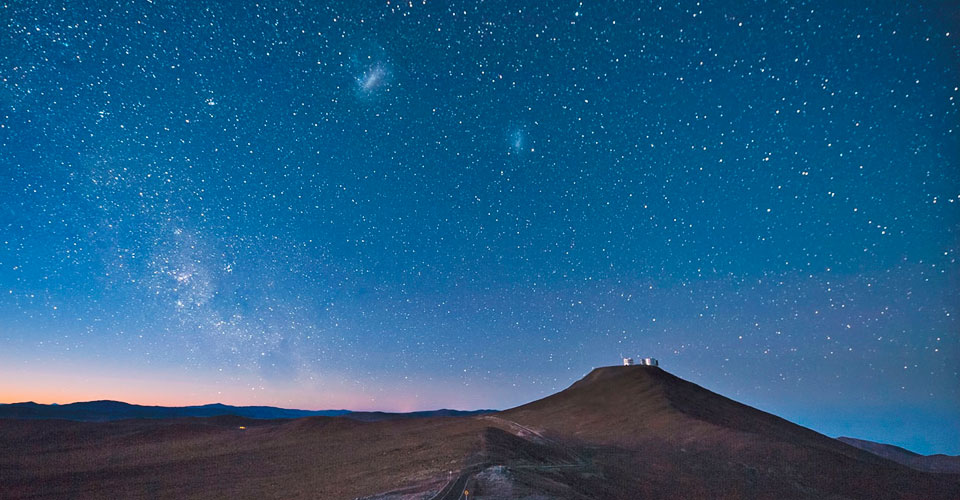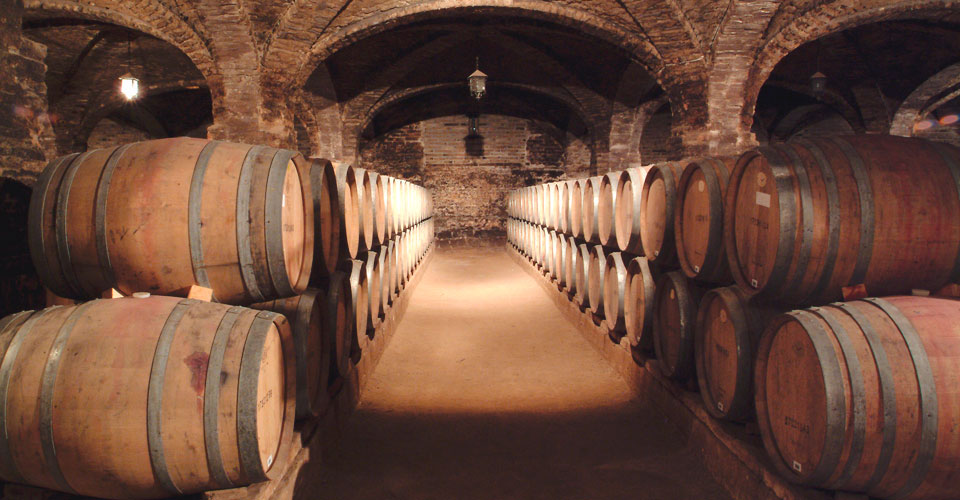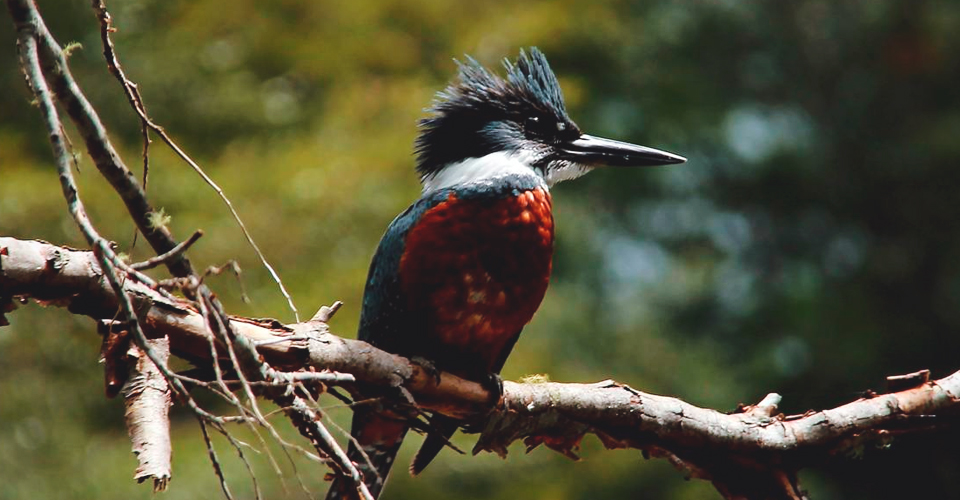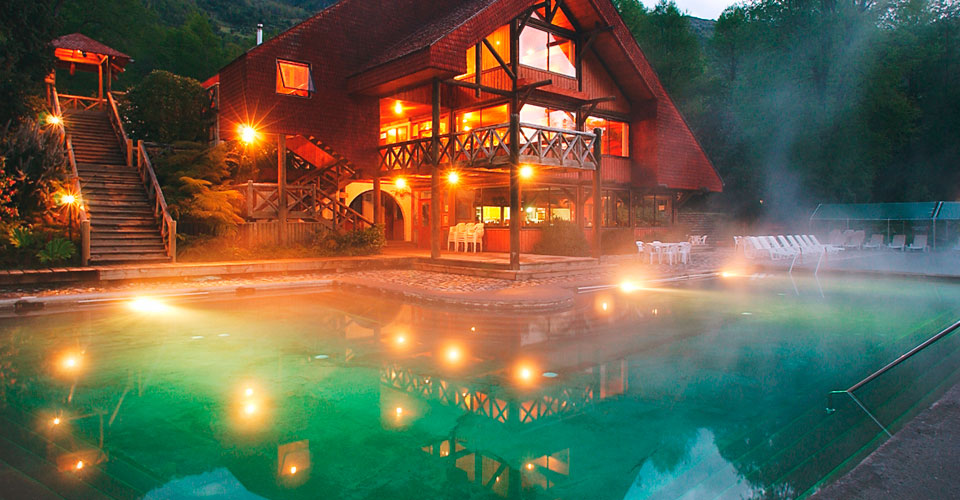The route of the stars
The Route of the Stars: A Journey to the Stars
The skies of North Chile are worldly known for their clarity and neatness due to its scarce rainfall, very beautifully expressed in a section of a poem of Pablo Neruda, a Chilean Poet. His poem highlights the phrase "the starry night", he really knew what he was talking about. In the Andean Area of Coquimbo, you will find the perfect opportunity to watch the stars and contemplate clear images of the magical Vía Lactea or Milky Way.
Coquimbo shelters scientific and touristic observatories; the visit to these observatories includes educational speeches and reveling sightings of the sky, which will surely give you a unique and also incomparable experience. In some observatories you can find other touristic services such as going horseback riding under the stars, enjoy a rustic dinner where stars shine, and going riding your bicycle at night.
Watching the Stars from Coquimbo
It is also possible to watch the magic of the stars and milky way in the surroundings of Coquimbo. Admiring the stars in Coquimbo, will give you flexibility of seeing varied landscapes in one day and accompany the route of the Stars with a touch of culture and nature. For example you can visit Elqui valley and witness the elaboration processes of a very typical national drink "Pisco Sour", or you can also visit the Punta de Choros Natural Reserve which protects species such as the Humboldt Penguin, Sea Lions, and bird species or interesting "Avifauna".
1) Mamalluca Observatory
This is an observatory which has found its place in Cerro Mamalluca, a hill located in the region of Vicuña. This place has turns true the dream of many tourists being the first touristic observatory in 1998. It is said that its name comes from the Quechua name which can translate into "extrange thing". The observatory has a dome which shelters a 16-inch telescope and other types of telescopes found in its terraces of the dobsonian type of 12, 16, and 17 inches. In the same place you will find the Astronomy Museum Nicolás Copérnico, where it is possible to shop souvenirs and drink a cup of coffee.
With different tour options, and always beginning with an introduction followed by a close experience of observing the ski in open air from the terraces, possible tours are the, "Tour del Ocaso Guiado", the "Basic Astronomy Guided Tour", and "Cosmovisión Andina" Guided Tour.
Location: at 9 kilometers northeast of Vicuña and 71 km to the northeast of La Serena.
Access: route 41, Camino Internacional Gabriela Mistral
2)Pangue Observatory
Set at 1.478 meters high, and very close to the region of Vicuña, you will find Pague Observatory. It shares a protected view of the sky and mountains. From its located you can see scientific observatories of SOAR, Geminis and Tololo. These observatories offer varied tours ranging from guided observation sessions of 2 hours long to complete nights. This observatory is perfect for demanding amateurs. It is possible to hire tours in English, Spanish, and also French.
It houses a 16-inch computerized telescope, with modern design and high quality. This very modern telescope allows you to have a clear view of the celestial bodies. Another tour is called "extreme", with a unique 25-inch diameter telescope, which is nowadays the most powerful tourism telescope in Chile.
Location: 17 km to the southeast of Vicuña located at 77 kilometers of La Serena, in the D-445 route.
Access: 41 Camino Internacional Gabriela Mistral and route D-445, to Río Hurtado.
3) Cancana-Cochiguaz Observatory
It is located in the skirts of Cerro Cancana, at 1.560 meters high. It has an observation dome equipped with two 14-inch Schmidt Cassegrain Telescopes, one of them is computerized and the other is motorized. The astronomical tours are divided into 3 phases, simple sky observation, an interactive speech in the multimedia room, and the observation of the sky in the dome using telescopes.
Other services you can find in the observatory are a restaurant, a quartz crystal healing pool where you can experience and choose from different alternative and natural therapies.
Location: At 11 kilometers to the southeast of Montegrande and 112 kilometers to the southeast of La Serena.
Access: Ruta D-41, taking the Valle del Elqui route.
4) Collowara Observatory
Its name originates from the Aymara native language, meaning "Land of the Stars" It is located at 1.300 meters high in the region of Andacollo, and only at 54 kilometers to the southeast of the city of La Serena. Set in the summit of Cerro Churqui, in a hill located only 15 minutes to the east of Andacollo, close to other scientific observatories.
This observatory has an excellent astronomical observation in 360°, with an infrastructure which contains three terraces in the shape of a cross, which points to the astronomic south. It has access ramps with small lights for easier access to protect environment. On the inside of the building it is possible to find a coffee place and a section where you can buy souvenirs and where you can find the Andacollita Stone, unique in the world. Among its equipment the highlights are: two 10 and 8-inch Dobson Telescopes, two automatic telescopes of 10 newtonians, one Smith Cassegrain 14-inch Telescope, and a Solar Telescope for day observation.
Location: At 5 kilometers to the southeast of Andacollo and 59 kilometers to the southeast of La Serena.
Access: Taking the Ruta D-43 and then taking Ruta D-51 until reaching Collawara Observatory.
5) Cruz del Sur Observatory, Cobarbalá
Set in the Cerro Peralito, at 1.140 meters high, and only 320 kilometers to the north of Santiago. It is the largest Astro-Touristic Complex in South America. It shelters four observation domes made out of copper, with modern 14, 16-inch telescopes. With these telescopes you can contemplate the most beautiful celestial bodies. It has an exhibit room where you can find an exhibition on images of the universe obtained through different observatories of Chile.
Location: At 3.5 kilometers of the Plaza de Cobarbalá, in the Cerro Peralito.
Access: From La Serena; Ruta D-43 to Ovalle, and then taking Ruta D-55 in the route/road to Cobarbalá.
6) Elqui Domos Observatory
This observatory shelters two electronic 8 and 9.25 inch Schmidt-Cassegrain Type telescopes with the latest technology in addition to digital planetary cameras and notebooks. Tours are more centered in exclusive walks, only accepting a maximum of 6 people for every 1 hour tour. Tours are time-limited because there is priority to the time people can use the telescopes to observe the stars.
Location: At 110 kilometers from La Serena and at 3.5 km to the south of Pisco Elqui.
Access: Taking the road to Pisco Elqui (from Ruta D-41 to access Ruta D-485)





